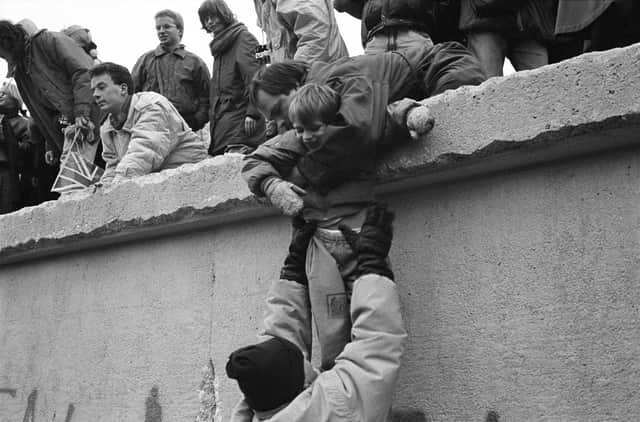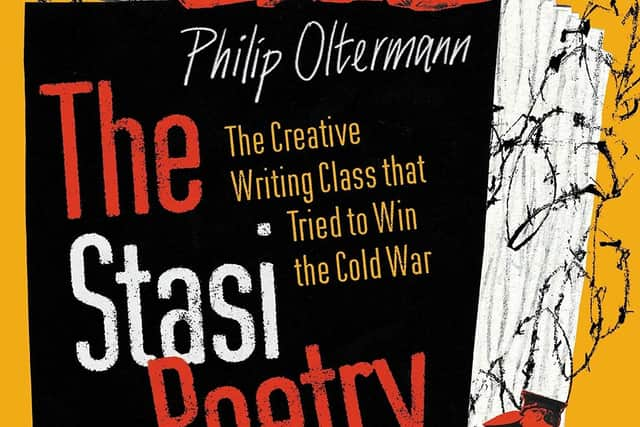Book review: The Stasi Poetry Circle, by Philip Olterman


Philip Olterman was born and brought up in West Germany, coming to the UK in his mid-teenage years. He studied English and German Literature at Oxford before going into journalism and is now Berlin bureau chief for a UK newspaper. All of this experience is brought to this short book which is an outstanding creative work. I say “creative”, because it is crafted in superlative writing, the like of which is rarely found even in the best non-fiction.
Olterman divides his book into twelve sections – lessons he calls them – each names after a figure of speech or a type of poetry. Through these, he tells how from the mid-1940s the German Democratic Republic promoted the arts and creativity in factories and ministries – particularly State Security, the Stasi. He uses his journalistic skills to sift through the Stasi archives and seek out sources who are willing to speak. Inevitably there are various dead ends to negotiate – some sources have actually died, others slam the door or don’t return phone calls – but his tenacity pays off.
Advertisement
Hide AdHe finds a key collection of poems written by members of the Stasi, identifies the creative writing tutor leading the class, Uwe Berger, and examines some of the poems written, teaching us much about the nature of poetry and with clear translations helping the reader understand the impact of specific words and lines along the way. These sections show the huge impact of Marxism Leninism on the GDR. Many of the leaders had been Communist Party activists exiled in Moscow during the war and returned in 1945 to run their new country. They imbued the Stasi with the doctrines of the original Soviet secret police – the Cheka. Stasi staff were to consider themselves Chekists, officers with “a cool head, a hot heart and clean hands”, and this was emphasised to the poetry circle members, too. Language and metaphor were important for the work in hand. The sonnet was an important poetic form to use because its structure was that of the Marxist view of history argued one returning exile. Military metaphor was expected and praised but Olterman finds that the results sometimes merged into the love poems the teenagers wanted to write, with comic effect. One amorous young poet declares himself “the lance corporal of love”, patiently waiting “for my next promotion / at least / to general”.


Creative writing was a cornerstone of political and cultural policy, but it also fitted Stasi operational practice. Berger, the tutor Olterman focuses on, informed on his class members, while they too were being trained to observe, infiltrate, and inform. Here we move from the techniques of policy and poetry to the systems and activities of informing. In the GDR, from the 1950s to the 1980s, these were even more all-embracing than those to be found in the USSR. In the 1970s, for example, the hitchhiking teenager Annegret Gollin was identified as a “negative decadent” after the Stasi was alerted by a nosey neighbour. Annegret’s poems, handwritten in a school notebook and shared with only a few friends, were seized when her room was searched. Her concrete poem connecting her feelings for the architecture that surrounded her, and set out in two parallel blocks of text, particularly concerned the Stasi. She was watched continuously and as a young woman was jailed for a time, her child taken into care.
The 1970s and 80s presented more problems for the GDR. Poets in the approved poetry circles were writing poems about nuclear warfare. The authorities responded by censoring output, using the term “appraisal” rather than censorship. Even dictionaries were carefully monitored – the definition of “opposition” was adjusted to read “this concept could not exist in a socialist state”. The Stasi Poetry Circle is a genre-defying work, an engrossing read and my book of the year so far.
The Stasi Poetry Circle: The Creative Writing Class that Tried to Win the Cold War, by Philip Olterman, Faber & Faber, 201pp, £14.99
A message from the Editor
Thank you for reading this article. We're more reliant on your support than ever as the shift in consumer habits brought about by coronavirus impacts our advertisers.
If you haven't already, please consider supporting our trusted, fact-checked journalism by taking out a digital subscription at https://www.scotsman.com/subscriptions